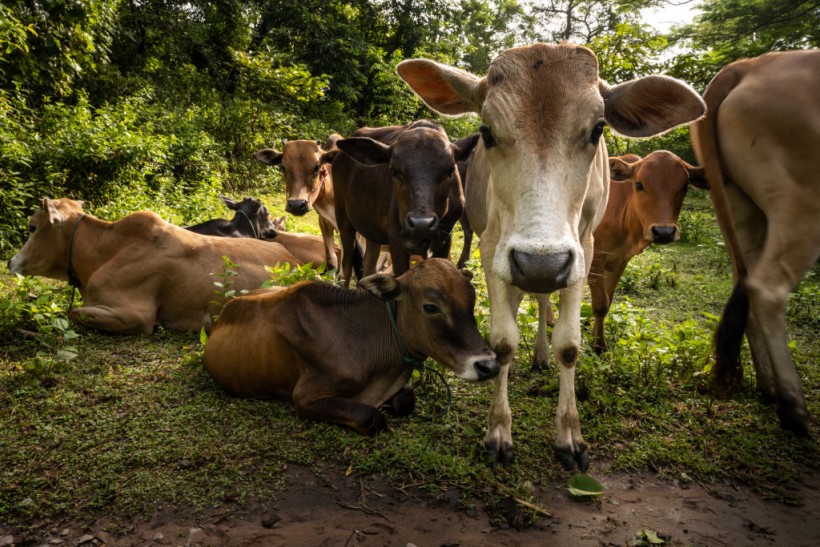Sexually transmitted infections (STIs) are the greatest threat to sexual health, which affects both males and females, especially after sexual intercourse.
In spite of growing evidence in recent years, there are only limited vaccines against some of these so-called sexually transmitted diseases (STD). The prevailing countermeasure is abstinence or engaging in protected sex by using condoms as a contraception.
Now a new study shows that prevent STIs is possible thanks to a lube or lubricant gel made from cow mucus. The new research says that the synthetic gel copies the self-healing function of a body mucus called mucin molecules; which traps virus particles like the human immunodeficiency virus (HIV) and herpes.
In this process, the mucus kills the pathogens to prevent them from entering the body.
Cow Mucus Lubricant Gel

For decades, STIs or STDs have been responsible for impairing its infected individuals and even cause their deaths. Mainly affecting sexual and reproductive systems, scientists have scrambled to mitigate or prevent the spread of these infections. Following the development of the cow mucus-based lube, the study's authors are hopeful it can serve as an alternative to unprotected or condomless sex.
In the new paper published in the journal Advanced Science on September 14, a team led by researchers from Sweden the cow mucus lubricant gel is 70% effective against HIV and is 80% effective against the herpes virus.
The research team says it also acts as a protective barrier in case condoms do not work, which is certain in small probabilities.
Also Read: Zero Sex Life? Being Single is Now a 'Disability,' WHO Says
What are STIs?
Over 1 million people acquire STIs on a daily basis across the globe, according to the World Health Organization (WHO). Majority of these cases are asymptomatic or individuals showing no evidence symptoms of the viral disease. There are instances where infected people are unaware, they already have it, with women and girls being more at risk compared to men and boys.
More than 30 different pathogens, including viruses, bacteria, and parasites are known to be transmissible through sexual contact, including anal, vaginal, or oral sex. Some type of STIs can also be passed down from mother to child during childbirth, pregnancy, or breastfeeding.
Curable and Non-Curable STIs
According to the WHO, there are eight pathogens associated with the most common STI transmissions divided into two categories: curable STIs and non-curable STIs.
Based on this division, there are four STIs that are curable such as chlamydia, gonorrhea, syphilis, and trichomoniasis. Meanwhile, the remaining four STIs are considered to be incurable viral infections like hepatitis B, HIV, herpes simplex virus (HSV), and human papillomavirus (HPV).
The international health body also mentions the following emerging outbreaks of new infections that can transmit STIs:
- monkeypox
- Shigella sonnei
- Neisseria meningitidis
- Ebola
- zika
- lymphogranuloma
In April 2022, the Centers for Disease Control and Prevention (CDC) reported a decline by 13% in new chlamydia cases, which accounts for most reported STDs in the US, back in 2020. This is also the case for other STDs in early 2020, but resurged by the end of the year, as cited by American Hospital Association (AHA).
Related Article: Study: Unsafe Sex, Fastest Growing Risk Involving Teens
© 2024 NatureWorldNews.com All rights reserved. Do not reproduce without permission.

![Tsunami Hazard Zones: New US Map Shows Places at Risk of Flooding and Tsunamis Amid Rising Sea Levels [NOAA]](https://1471793142.rsc.cdn77.org/data/thumbs/full/70325/280/157/50/40/tsunami-hazard-zones-new-us-map-shows-places-at-risk-of-flooding-and-tsunamis-amid-rising-sea-levels-noaa.jpg)



